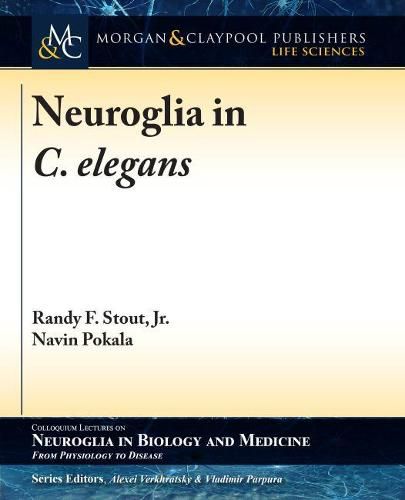Readings Newsletter
Become a Readings Member to make your shopping experience even easier.
Sign in or sign up for free!
You’re not far away from qualifying for FREE standard shipping within Australia
You’ve qualified for FREE standard shipping within Australia
The cart is loading…






The nematode C. elegans is one of the most important model organisms for understanding neurobiology. Its completely mapped neural connectome of 302 neurons and fully characterized and stereotyped development have made it a prototype for understanding nervous system structure, development, and function. Fifty-six out of C. elegans’ total of 959 somatic cells are classified as neuroglia. Although research on worm glia has lagged behind studies focused on neurons, there has been a steep upswing in interest during the past decade. Information arising from the recent burst of research on worm glia supports the idea that C. elegans will continue to be an important animal model for understanding glial cell biology. Since the developmental lineage of all cells was mapped, each glial cell in C. elegans is known by a specific name and has research associated with it. We list and describe the glia of the hermaphrodite form of C. elegans and summarize research findings relating to each glial cell. We hope this lecture provides an informative overview of worm glia to accompany the excellent and freely available online resources available to the worm research community.
$9.00 standard shipping within Australia
FREE standard shipping within Australia for orders over $100.00
Express & International shipping calculated at checkout
The nematode C. elegans is one of the most important model organisms for understanding neurobiology. Its completely mapped neural connectome of 302 neurons and fully characterized and stereotyped development have made it a prototype for understanding nervous system structure, development, and function. Fifty-six out of C. elegans’ total of 959 somatic cells are classified as neuroglia. Although research on worm glia has lagged behind studies focused on neurons, there has been a steep upswing in interest during the past decade. Information arising from the recent burst of research on worm glia supports the idea that C. elegans will continue to be an important animal model for understanding glial cell biology. Since the developmental lineage of all cells was mapped, each glial cell in C. elegans is known by a specific name and has research associated with it. We list and describe the glia of the hermaphrodite form of C. elegans and summarize research findings relating to each glial cell. We hope this lecture provides an informative overview of worm glia to accompany the excellent and freely available online resources available to the worm research community.